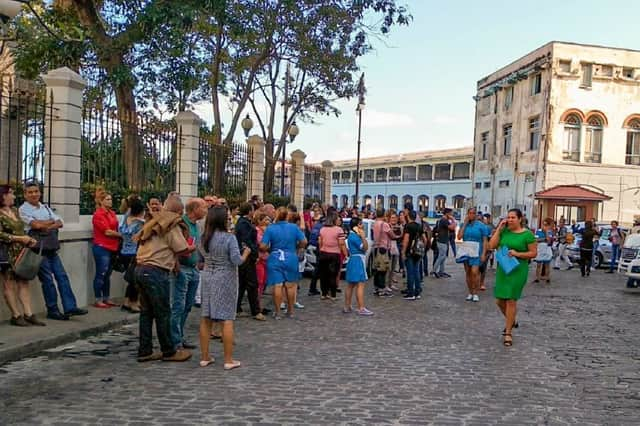Here's what travellers to Cuba and Jamaica need to know after the Caribbean earthquake


A 7.7 magnitude earthquake struck the Caribbean on Tuesday night, sparking tsunami warnings across the region and office evacuations in the United States.
There are no reported casualties at this stage or widespread damage, after tremors were felt across the Caribbean, causing buildings to shake.
Advertisement
Hide AdAdvertisement
Hide AdTsunami warnings were issued by the Pacific Tsunami Warning Center (PTWC), for Belize, Cuba, Honduras, Mexico, the Cayman Islands and Jamaica but later withdrawn, stating that the "tsunami threat had now largely passed".
Offices in Miami and Jamaica were also evacuated when the quake struck.
Is it safe to travel to the Caribbean?
Though a small tsunami of 0.4 feet was recorded in the Cayman Islands at George Town, no such waves have been recorded in Jamaica or Cuba.
Advertisement
Hide AdAdvertisement
Hide AdThe Foreign and Commonwealth Office (FCO) have not issued any advice to travellers visiting the region, though they do advise about the risk of earthquakes.
They note that "Jamaica is prone to earthquakes" in their general advice and warn that "Cuba is located in an active earthquake zone.
They reassure visitors, however, that "strong earthquakes occur infrequently and most seismic events pass unnoticed."
Airports in the affected region are still operating normally, meaning their shouldn't be any impact on travel arrangements for tourists visiting.
What should I do if an earthquake strikes?
Advertisement
Hide AdAdvertisement
Hide AdThe FCO recommends that tourists follow the advice of the US Federal Emergency Management Agency (FEMA) should a quake strike.
In the event of an earthquake, FEMA advises taking the three following steps:
"Drop wherever you are on to your hands and knees. ""Cover your head and neck with your arms. If a sturdy table or desk is nearby, crawl underneath it for shelter. If no shelter is nearby, crawl next to an interior wall (away from windows).""If you are under a table or desk, hold on with one hand and be ready to move with it if it moves. If you can’t find a table or desk, cover your head and neck with both arms and hands. If seated and unable to drop to the floor, bend forward, cover your head with your arms, and hold on to your neck with both hands."
In the aftermath of an earthquake the FCO instructs affected travellers to follow the advice of the local authorities.
Advertisement
Hide AdAdvertisement
Hide AdIn the event of a tsunami, FEMA warns to take the following steps.
"Get to high ground as far inland as possible.""Be alert to signs of a tsunami, such as a sudden rise or draining of ocean waters.""Listen to emergency information and alerts.""Evacuate: DO NOT wait! Leave as soon as you see any natural signs of a tsunami or receive an official tsunami warning."